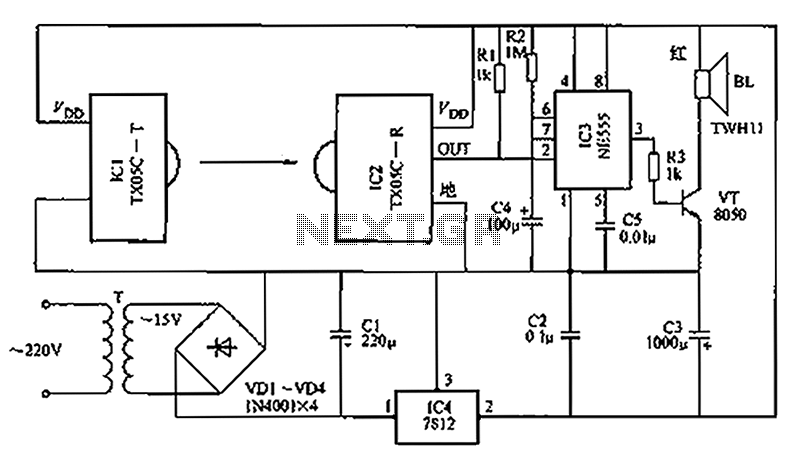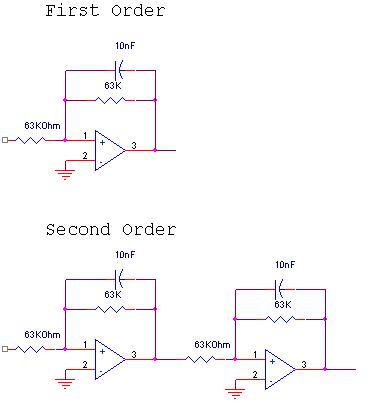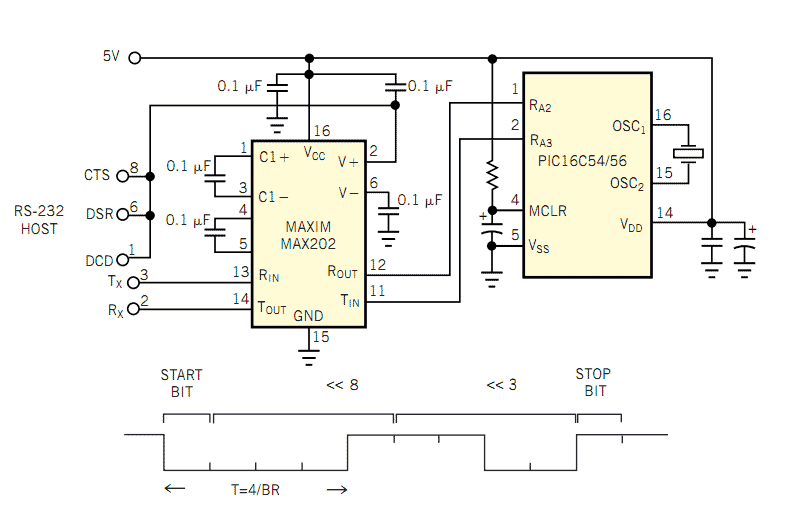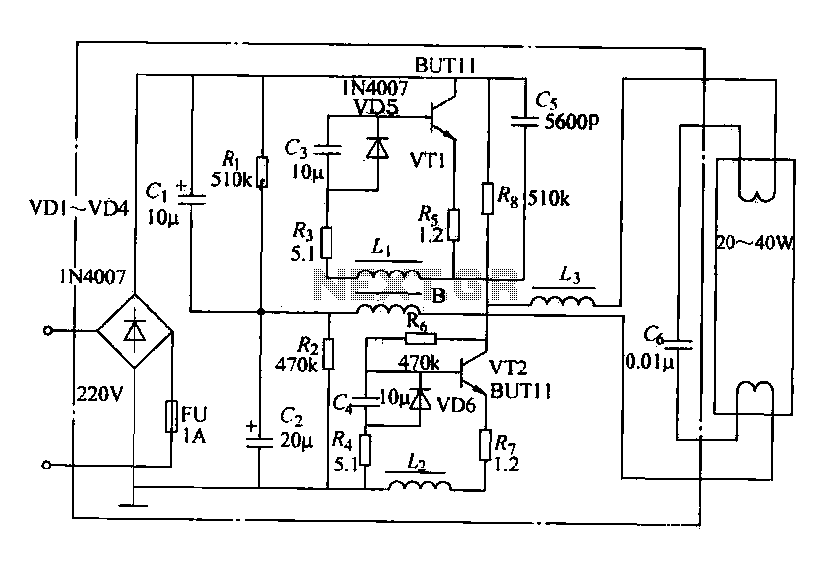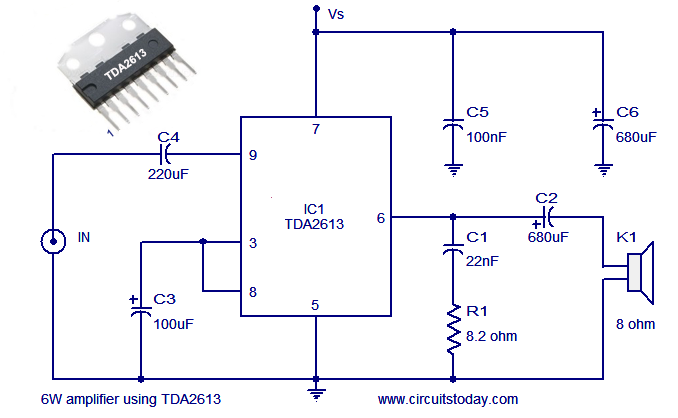
transistor tester circuit
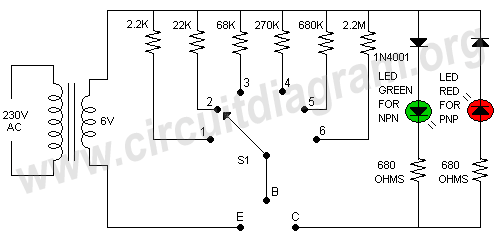
This is a simple transistor tester circuit that can be utilized to test both NPN and PNP transistors. The voltage source consists of a 6V power supply, which is derived from a step-down transformer that converts 230V AC to 6V DC. It is crucial to connect the transistor leads in the correct orientation: the emitter of the transistor should connect to the circuit emitter marked (E), the base to the circuit base marked (B), and the collector to the circuit collector marked (C). The switch S1 is a rotary switch that allows the selection of the appropriate base resistor for the transistor being tested. A green LED indicates that the NPN transistor under test is functioning correctly, while a red LED signals that the PNP transistor is operating properly.
The transistor tester circuit is designed for ease of use and accuracy in evaluating the functionality of bipolar junction transistors (BJTs). The circuit operates with a 6V power supply derived from a 230V AC input through a step-down transformer, ensuring safety and compatibility with standard household voltage levels. The rotary switch S1 is integral to the circuit, allowing the user to select from multiple base resistors, which is essential for accommodating various transistor specifications and ensuring accurate testing.
The arrangement of the transistor leads is critical; incorrect connections can lead to erroneous readings or potential damage to the transistors. The emitter, base, and collector are distinctly marked on the circuit board, providing clear guidance for proper connections. When an NPN transistor is correctly connected and functioning, the green LED illuminates, providing immediate visual feedback. Conversely, when a PNP transistor is tested and found to be operational, the red LED lights up, indicating successful testing.
This circuit is particularly useful for hobbyists and engineers who require a straightforward method to verify the operational status of transistors. Its simplicity and effectiveness make it a valuable tool in both educational and practical electronics applications.This is a very simple transistor tester circuit the circuit can be used to test NPN and PNP transistors. The voltage source is a 6V power supply which is 230V AC to 6V step down transformer. It is essential to put the transistor leads in right direction like transistor emitter to circuit emitter where (E) is marked transistor base to circuit base
marked (B) and transistor collector to circuit collector marked (C). The switch S1 is a rotary switch to choose a correct base resistor for under test transistor. The green LED will glow when an under test NPN transistor is working correctly and red LED will glow when an under test PNP transistor is working correctly. 🔗 External reference
The transistor tester circuit is designed for ease of use and accuracy in evaluating the functionality of bipolar junction transistors (BJTs). The circuit operates with a 6V power supply derived from a 230V AC input through a step-down transformer, ensuring safety and compatibility with standard household voltage levels. The rotary switch S1 is integral to the circuit, allowing the user to select from multiple base resistors, which is essential for accommodating various transistor specifications and ensuring accurate testing.
The arrangement of the transistor leads is critical; incorrect connections can lead to erroneous readings or potential damage to the transistors. The emitter, base, and collector are distinctly marked on the circuit board, providing clear guidance for proper connections. When an NPN transistor is correctly connected and functioning, the green LED illuminates, providing immediate visual feedback. Conversely, when a PNP transistor is tested and found to be operational, the red LED lights up, indicating successful testing.
This circuit is particularly useful for hobbyists and engineers who require a straightforward method to verify the operational status of transistors. Its simplicity and effectiveness make it a valuable tool in both educational and practical electronics applications.This is a very simple transistor tester circuit the circuit can be used to test NPN and PNP transistors. The voltage source is a 6V power supply which is 230V AC to 6V step down transformer. It is essential to put the transistor leads in right direction like transistor emitter to circuit emitter where (E) is marked transistor base to circuit base
marked (B) and transistor collector to circuit collector marked (C). The switch S1 is a rotary switch to choose a correct base resistor for under test transistor. The green LED will glow when an under test NPN transistor is working correctly and red LED will glow when an under test PNP transistor is working correctly. 🔗 External reference
